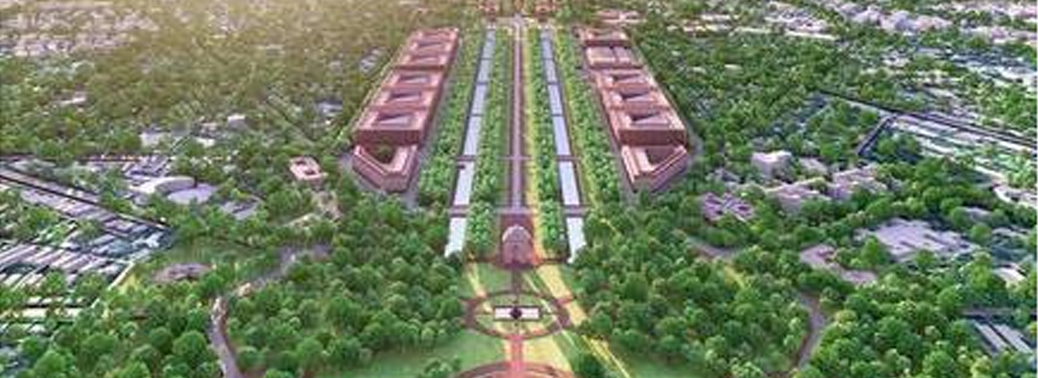ENVIRONMENT MINISTRY GIVES NOD FOR NEW PARLIAMENT PROJECT
04, May 2020

Prelims level : Environment
Mains level : GS-II Government Policies and Interventions for Development in Various Sectors and Issues Arising out of their Design and Implementation.
Why in News?
- Recently, the Centre’s proposal to construct a new Parliament building next to the existing heritage structure was approved by the Environment Ministry’s expert appraisal committee (EAC).
Highlights:
- No Stay Order: The March notification of the Ministry of Housing and Urban Affairs of (MoHUA) changing the land-use of the plot from “recreational (district park)” to “Parliament” in the Master Plan of Delhi has been challenged in the Supreme Court There would be “no significant impacts on public space” and with the entire area being in “high security zone”
- The project would not lead to any increase in air and noise pollution and the water consumption would decrease due to reuse of treated water.
- Inadequate Assessment: an independent environment law researcher, said the assessment done was inadequate. As per him the project is without carrying out a full environment assessment of the stand-alone Parliament project.
New Parliament Project:
- The EAC said the approval is subjected to the outcome of a legal challenge to the change of land-use of the plot, according to the minutes of the meeting.
- New Parliament house:The Central Public Works Department’s (CPWD) proposal for “expansion and renovation of the existing Parliament building at Parliament Street” was among the projects considered by the EAC at its meetings on April 22-24.
- The Project Cost: the project cost, as submitted by the CPWD, had gone up from ₹776 crore to ₹922 crore due to “changes in Project Specifications.
- The new Parliament will have a maximum height of 42 metre spread over 65,000 square metre of built-up area on a 10.5 acre or 42,031 square metre plot.
- Buildings constructed in the 1970s and 1980s on the site, including the existing Parliament reception and an AC plant, which total 5,200 square metre in built-up space, will be demolished. Of the 333 trees on the plot, 223 will be transplanted and 100 retained.
- Need Retrofitting:The existing Parliament building was constructed 93 years ago. Over the years many planned/ unplanned changes have been made, often undocumented. It is in direct need of retrofitting as soon as possible.
Environmental Impact Assessment:
- UNEP defines Environmental Impact Assessment (EIA) as a tool used to identify the environmental, social and economic impacts of a project prior to decision-making. It aims to predict environmental impacts at an early stage in project planning and design, find ways and means to reduce adverse impacts, shape projects to suit the local environment and present the predictions and options to decision-makers.
- Environment Impact Assessment in India is statutorily backed by the Environment Protection Act, 1986 which contains various provisions on EIA methodology and process.
The Need for EIA:
- Development projects have negative externalities too. Every anthropogenic activity has some impact on the environment more often it has a negative impact on the environment than positive. That is why there is a need to harmonize development activities with environmental concerns.
- The EIA process also serves an important procedural role in the overall decision-making process by promoting transparency and public involvement.
Objective of EIA:
- To identify, predict and evaluate the economic, environmental and social impact of Development Activities
- To provide information on the environmental consequences for decision making and Benefits of EIA:
- Proposes modified designs to reduce environmental impacts
- Identifies feasible alternatives
- Predicts Significant adverse Impacts
- Other benefits – Environmental assessment has many benefits, such as protection of the environment, optimum utilization of resources and saving of time and cost of the project.
- Identifies mitigation measures to reduce, offset, or eliminate major impacts
- Engages and informs potentially affected communities and individuals
- Influences decision-making and the development of terms and conditions. Promoting community participation – Properly conducted EIA also lessens conflicts by promoting community participation, informing decision-makers, and helping lay the base for environmentally sound projects.










